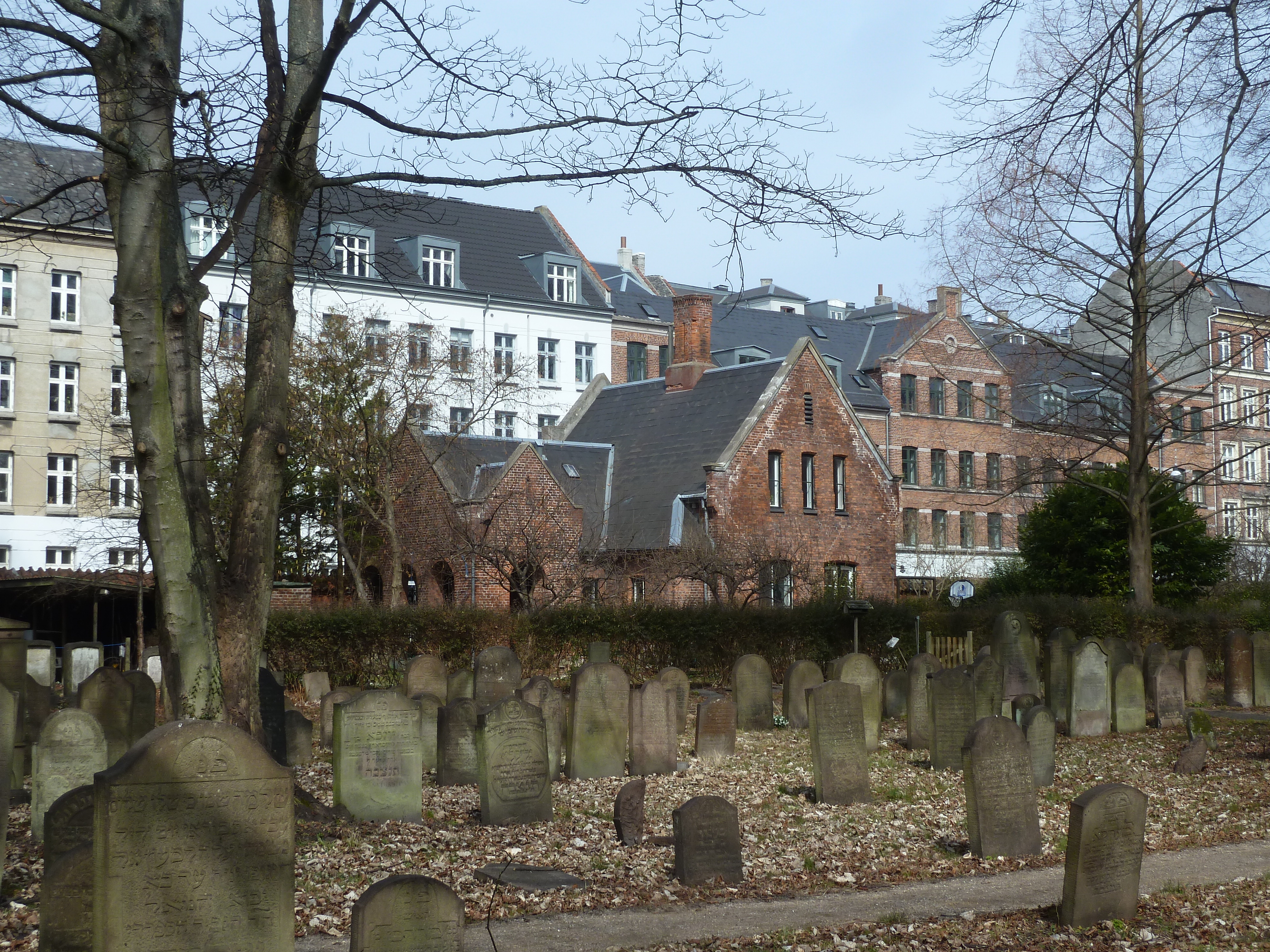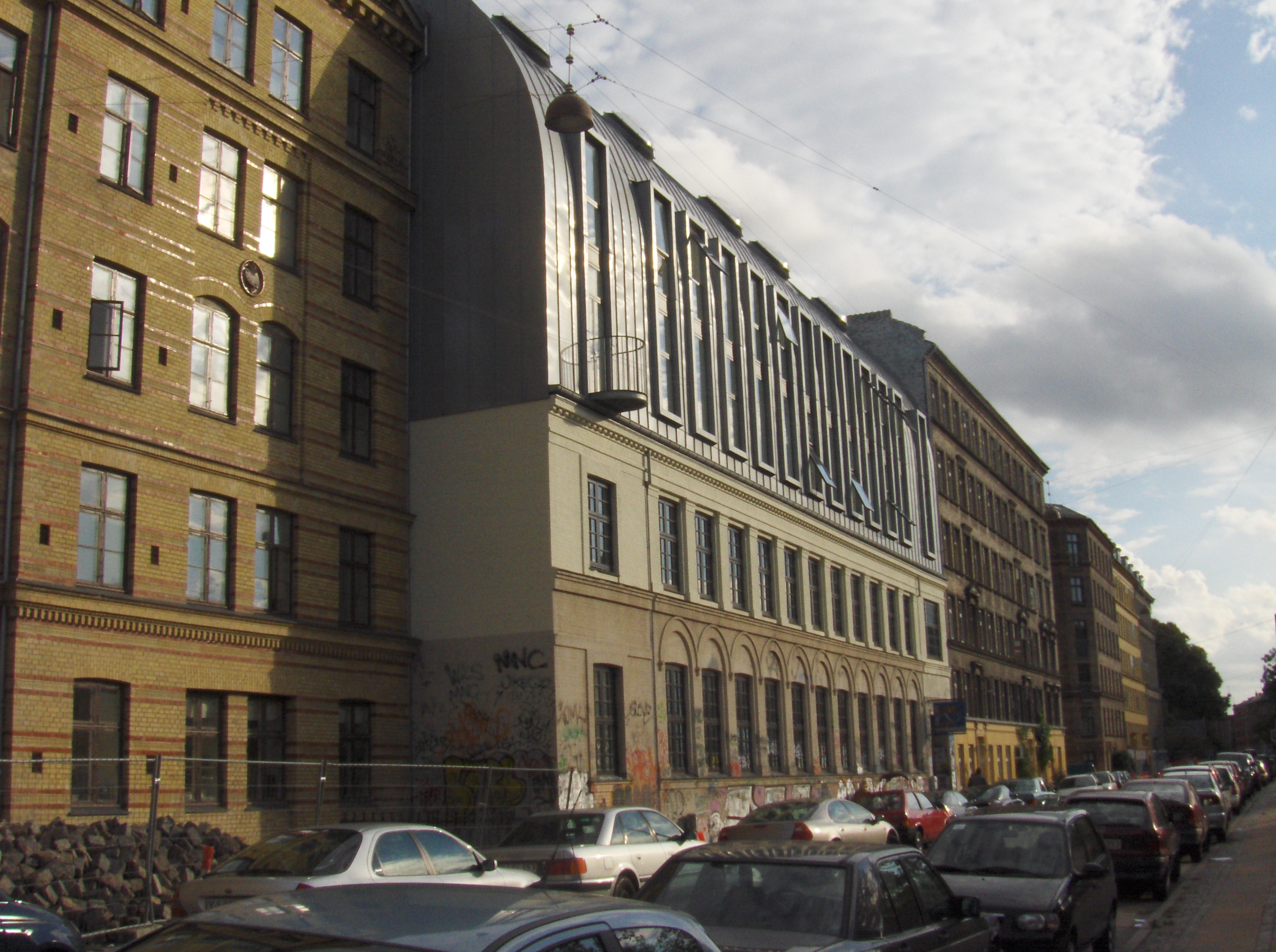Møllegade on:
[Wikipedia]
[Google]
[Amazon]
 Møllegade ( lit. "Mill Street") is a street in the
Møllegade ( lit. "Mill Street") is a street in the
 LiteraturHaus (No. 7) is a meeting place for aspiring writers, artists and other people with an interest in literature. The building is a former Methodist church, Bethania Church, which was built in 1892 to design by the architects Henrik Hagemann and
LiteraturHaus (No. 7) is a meeting place for aspiring writers, artists and other people with an interest in literature. The building is a former Methodist church, Bethania Church, which was built in 1892 to design by the architects Henrik Hagemann and  The
The  Det Frie Gymnasium (No. 26) is an upper secondary school which emphasizes school democracy, alternative teaching methods and creative programmes. The school was founded in 1970 and has been located on Møllegade since 1992.
Det Frie Gymnasium (No. 26) is an upper secondary school which emphasizes school democracy, alternative teaching methods and creative programmes. The school was founded in 1970 and has been located on Møllegade since 1992.
 The
The
Nørrebro
Nørrebro (, ) is one of the 10 official districts of Copenhagen, Denmark. It is northwest of the city centre, beyond the location of the old Northern Gate (''Nørreport''), which, until dismantled in 1856, was near the current Nørreport station ...
district of Copenhagen
Copenhagen ( or .; da, København ) is the capital and most populous city of Denmark, with a proper population of around 815.000 in the last quarter of 2022; and some 1.370,000 in the urban area; and the wider Copenhagen metropolitan ar ...
, Denmark
)
, song = ( en, "King Christian stood by the lofty mast")
, song_type = National and royal anthem
, image_map = EU-Denmark.svg
, map_caption =
, subdivision_type = Sovereign state
, subdivision_name = Danish Realm, Kingdom of Denmark
...
. It runs from Nørrebrogade
Nørrebrogade is the principal shopping street of the Nørrebro district of Copenhagen, Denmark. It runs from The Lakes in the southeast to Nørrebro station in the northwest, linking Frederiksborggade and Queen Louise's Bridge with Frederikssun ...
in the southwest to Nørre Allé
Nørre Alle (literally "North Avenue") is a street in Copenhagen, Denmark, running from Blegdamsvej in Nørrebro in the south to Vibenshus Runddel in Østerbro in the north. It runs through University of Copenhagen's North Campus which is cent ...
in the northeast. Copenhagen's Jewish Northern Cemetery has its entrance on the south side of the street and De Gamles By
De Gamles By is a home for the elderly occupying an extensive site in the Nørrebro district of Copenhagen, Denmark. It is increasingly integrated with the surrounding community and is now also home to other facilities, including day cares, a M ...
is located on its north side.
History
The street is one of the oldest road stretches in Nørrebro. It was part of the original Jagtvej which was created shortly after the construction of Ladegården in 1620 to provide royal hunting parties with easy access to Store Vibenshus from where they followed the Eoyal Frederiksborg Road north toJægersborg Dyrehave
Dyrehaven (Danish 'The Deer Park'), officially Jægersborg Dyrehave, is a forest park north of Copenhagen. It covers around . Dyrehaven is noted for its mixture of huge, ancient oak trees and large populations of red and fallow deer. In July ...
or Frederiksborg Castle
Frederiksborg Castle ( da, Frederiksborg Slot) is a palatial complex in Hillerød, Denmark. It was built as a royal residence for King Christian IV of Denmark-Norway in the early 17th century, replacing an older castle acquired by Frederick II ...
in North Zealand
North Zealand, also North Sealand ( da, Nordsjælland), refers to the northern part of the Danish island of Zealand which is not clearly defined but generally covers the area north of Copenhagen. The Danish tourist authorities have recently in ...
.
The lower part of the road later became known as Jødevej (Jew Road) due to the location of the Jewish Cemetery. In 1831, it was one of only three side roads to Nørrebrogade. The upper part of the street was called Sandgravsvej ("Sand Pit Road") due to a number of sand pits located where De Gamles By
De Gamles By is a home for the elderly occupying an extensive site in the Nørrebro district of Copenhagen, Denmark. It is increasingly integrated with the surrounding community and is now also home to other facilities, including day cares, a M ...
is today. The sand was for instance used for white-washing of floors. The road received its current name in 1858.
Notable buildings and residents
 LiteraturHaus (No. 7) is a meeting place for aspiring writers, artists and other people with an interest in literature. The building is a former Methodist church, Bethania Church, which was built in 1892 to design by the architects Henrik Hagemann and
LiteraturHaus (No. 7) is a meeting place for aspiring writers, artists and other people with an interest in literature. The building is a former Methodist church, Bethania Church, which was built in 1892 to design by the architects Henrik Hagemann and Knud Arne Petersen
Knud Arne Petersen (5 August 1862 – 27 June 1943) was a Danish architect and director of Tivoli Gardens in Copenhagen from 1899 to 1940. Apart from his engagement with Tivoli Gardens, where he created several prominent buildings, including the C ...
. LiteraturHaus opened in April 2005 with inspiration from similar venues in Germany.
Jewish Cemetery
A Jewish cemetery ( he, בית עלמין ''beit almin'' or ''beit kvarot'') is a cemetery where Jews are buried in keeping with Jewish tradition. Cemeteries are referred to in several different ways in Hebrew, including ''beit kevarot'' ...
(Mp. 12) was established at the site in the 1690s. The brick wall which today surrounds the cemetery on three sides, along Møllegade, Guldbergsgade and Birkegade, was built in 1873 to a design by Vilhelm Tvede. The entrance is on Møllegade. The cemetery was listed in 1983.
 Det Frie Gymnasium (No. 26) is an upper secondary school which emphasizes school democracy, alternative teaching methods and creative programmes. The school was founded in 1970 and has been located on Møllegade since 1992.
Det Frie Gymnasium (No. 26) is an upper secondary school which emphasizes school democracy, alternative teaching methods and creative programmes. The school was founded in 1970 and has been located on Møllegade since 1992.
 The
The Alderstrøst
Alderstrøst refers to two residential complexes built by Association of Craftsmen in Copenhagen to provide affordable housing for elderly, indigent members and their widows in the Nørrebro district of Copenhagen, Denmark. The oldest is located on ...
charitable housing complex ([No. 28–30) was built by Håndværkerforeningen and contained affordable housing for old craftsmen. The buildings at No. 15 and No. 19 were completed in 1895 to design by Thorvald Sørensen. The building at No. 17 was built in 1939 by Henning Hansen.
The daycare Møllehuset (No. 33) opened in 2004. The building was designed by OMC Arkitekter.
Public art
Next to LiteraturHaus stands Anders Bundgaard's bronze statue ''Studying Girl'' (Danish: ''Granskende Pige'') from 1934. It depicts a girl reading arunestone
A runestone is typically a raised stone with a runic inscription, but the term can also be applied to inscriptions on boulders and on bedrock. The tradition began in the 4th century and lasted into the 12th century, but most of the runestones da ...
and a scroll
A scroll (from the Old French ''escroe'' or ''escroue''), also known as a roll, is a roll of papyrus, parchment, or paper containing writing.
Structure
A scroll is usually partitioned into pages, which are sometimes separate sheets of papyrus ...
. It was installed at the site in 2008.
References
External links
{{DEFAULTSORT:Mollegade Streets in Nørrebro